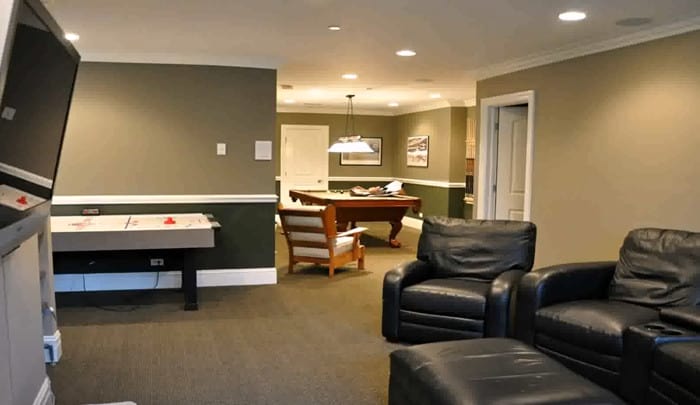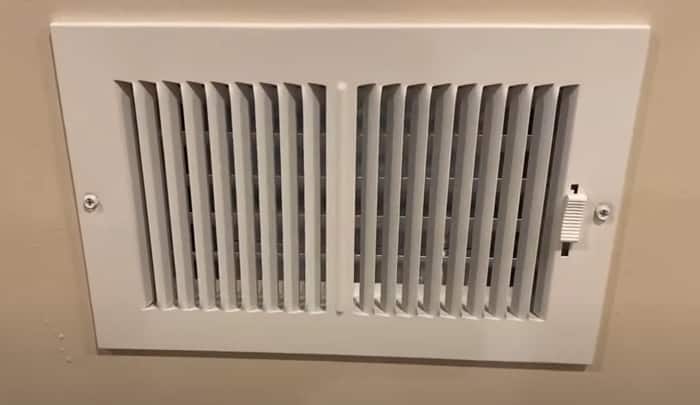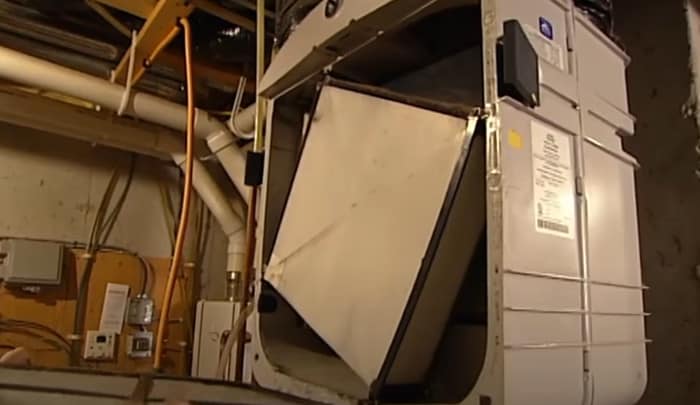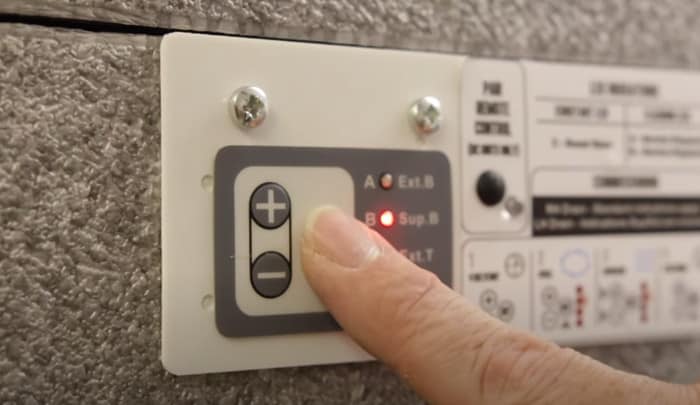As Summer progresses, there’s nothing worse than dealing with a stuffy, airless bedroom. When you add the fact that your bedroom doesn’t have any windows, it can seem like you’re stuck in an unbearably hot oven. But don’t despair! Here are some ingenious tricks you can use to improve your home’s circulation and make your home sweet home more bearable during the hot days ahead. From installing ceiling fans and coolers, to even leveraging the power of plants and fragrances, here are five unique tips on how to improve air circulation in a room without windows. Ready, set, breath fresh air!
You can use ceiling or floor fans to circulate air in a room without windows. You can also use P-traps, which are special vents that allow air to flow between rooms.
“Improving air circulation in windowless rooms may appear challenging, but with the right use of mechanical filters and regulating humidity, it’s a manageable task. Be sure to place fans strategically to simulate wind effect and use indoor plants with high oxygen output. Remember, good circulation isn’t just about moving air around, but creating an atmosphere conducive to human health and comfort.”
Graham Yewbrey, Certified Indoor Air Quality Consultant
Ventilation Systems:
Ventilation systems can be a great way to improve air circulation in a room with no windows, such as a basement. By using an exhaust fan, indoor air is released and replaced with outdoor air, making the room more comfortable and breathable. Ventilation systems are particularly useful during hot summer months when a windowless room becomes even warmer. The introduction of outside air helps to reduce the temperature and make the room more pleasant.
On the other hand, ventilation systems come with certain drawbacks. Installation of an exhaust fan system can be quite costly, depending on the size of the room and the complexity of the system itself. In addition, an exhaust fan will require regular cleaning and maintenance to keep it running at optimum levels. This will add to the overall cost of using a ventilation system.
Finally, ventilation systems should not be used as a substitute for opening windows for fresh air when available. While an exhaust fan system can help to circulate air within a windowless space, it should not be viewed as a replacement for proper ventilation from the outdoors.
With that in mind, installing exhaust fans is one way to improve air circulation in a room with no windows. The following section will discuss how to go about selecting and installing an exhaust fan in your windowless space.

Installing Exhaust Fans
Installing exhaust fans is another way to improve air circulation in a room with no windows. Exhaust fans can be purchased from most home improvement stores and generally come with instructions on how to install them. These fans not only help with air circulation but can also assist in regulating temperature and humidity levels. They mount directly onto walls or ceilings, and are designed to suck air out of a room to create under-pressure inside the room, which encourages fresh air to be drawn indoors. While exhaust fans are an effective tool for improving air circulation, there are some potential drawbacks. The fans can introduce additional noise into the room, and require some electrical work for installation and regular maintenance, which may not be possible if the room has no power supply.
Another factor to consider when installing exhaust fans is their rate of airflow. If the fans’ capacity exceeds the size of the space it’s being installed in, it could cause an unpleasant airflow sensation in the area. To ensure proper functioning of an exhaust fan, carefully calculate the volume of air that needs to be moved compared to the capacity of the fan you plan to install.
Finally, exhaust fans do require some form of ducting so that the hot or stale air they pull out is not simply released back into the room they are installed in. This can add complexity and cost to the project, but is necessary for efficient operation and effective air circulation in a space without windows.
With careful consideration and planning, however, installing exhaust fans can be an effective way of improving air circulation in a room with no windows. In the next section we’ll discuss Ventilation Through Walls: a powerful technique for circulating indoor airwithout sacrificing precious space or adding excessive noise.
Ventilation Through Walls:
Ventilation through walls is a great option for those who have a room without windows. It involves making small holes in the walls and installing fans or vents to move air in and out of the room. While this solution can be effective, it is important to understand the pros and cons before deciding to go this route.
The biggest benefit of ventilation through walls is that it does not require any significant changes to the layout of the space. Since no alterations like windows need to be made, installation should be relatively straightforward and require minimal disruption or construction. This makes ventilating an enclosed room easier and more cost-effective than if done via windows or other methods.
That being said, there are some drawbacks to consider for ventilation through walls that may limit its long-term usefulness. For one, the lifespan of a fan or vent will depend on how often it’s used and how much dirt accumulates in or around it over time. In addition, excessive use could cause wear and tear that might otherwise be avoided by using a window-based ventilation system. Finally, fans and vents create noise which may be disruptive depending on their location in relation to living quarters.
Considering both the advantages and disadvantages of ventilation through walls, it is key to evaluate each situation individually prior to making any decisions so as to ensure an appropriate form of air circulation is put into place. Doing so will help ensure any chosen solution has optimal results both now and into the future.
From there,Installing Vents and Filters becomes the next logical step for achieving improved air circulation in a room with no windows.

Installing Vents and Filters
Installing vents and filters is an important part of improving air circulation in a room with no windows. It allows fresh air to be consistently brought into the room while pushing stale air out. For rooms with no windows, installing vents and filters can help keep indoor air quality healthy and improve comfort levels when using the space.
In terms of installation, most windows can accommodate a vent installation, either through a wall or through the floorboard. Ventilation systems may also require additional repair work for bigger rooms due to the additional piping that needs to be installed along with them. If you’re unsure about how extensive the repair work may need to be for your specific situation, it might be beneficial to consult a professional HVAC technician who will be able to provide more detailed instructions on installing ventilation systems. But in general, the initial installation process should not be too difficult and should not require any major changes to your existing setup.
Once you’ve got the components installed, it’s important to regularly maintain your system by changing or cleaning filters as needed. Things like pet hair, dust and other debris accumulates quickly in dirty vents, so make sure that you keep an eye out for signs of blockage. Not doing so could cause a decrease in air circulation inside your home.
The cost of installing vents and filters is another factor worth considering, as it tends to outweigh the benefit gained when only small amounts of indoor air are circulated around the room. Additionally, if noise pollution is something you’re concerned about, then you may want to opt for quieter ventilation solutions such as an attic fan or ceiling fans instead since they tend to be less noisy than traditional systems.
It’s worth noting that despite their higher cost and more labor-intensive installation process, vents and filters still remain one of the most effective ways for improving air circulation without windows.
Now that we’ve discussed installing vents and filters as a way to improve air circulation in a room with no windows, let’s look at how using air purifiers can also help with ventilation:
Most Important Highlights
Installing vents and filters is an effective way to improve air circulation in a room with no windows, although the cost and labor of installation can be significant. Regular filter maintenance is important for optimal performance, and quieter systems such as attic fans or ceiling fans are available to reduce noise pollution. Air purifiers can also help with ventilation.

Ventilation Through Air Purifiers:
Ventilation Through Air Purifiers: One way to improve air circulation in a room with no windows is by using air purifiers. Air purifiers can help to filter out harmful particles and contaminants, such as dust, dander, fumes, and smoke. Not only does this provide better air quality in the room, but it can also help to circulate the air for better ventilation, acting as a ductless cooling solution in rooms without windows.
Some homeowners are hesitant to invest in an air purifier because of the cost associated with them. They may worry about upkeep expenses or energy bills from running them constantly. However, this is usually not needed since most purifiers only need to operate when the room is occupied. Additionally, modern filters are relatively maintenance-free and can be replaced every few months or so depending on their grade.
At times, air purifiers have also been criticized for producing ozone that can be harmful to health if done long term. Ozone generators are found mainly in older units that are no longer being produced, so modern models should be completely safe when used properly and in moderation.
Air purifiers offer a quick way to improve indoor air quality without having to introduce any new elements into the room. This can help make the room more comfortable overall while boosting ventilation through the filter’s cycle process.
To further improve air circulation in a room with no windows, consider looking into ways of purifying and circulating fresh air in the next section.
Purifying and Circulating Fresh Air
Air purifying and circulating fresh air are key priorities when it comes to improving air circulation in a room with no windows. In order to maximize the circulation of clean, breathable air throughout the space, you will need to take a few necessary steps to purify the air.
The first step is to purchase a high-quality air purifier for your room. Air purifiers clean and circulate the air by trapping allergens, pollutants, dust, and other harmful particles that might contribute to poor quality indoor air. They also reduce odor levels, creating a more pleasant environment to live and work in. There are various types of air purifiers available on the market; depending on your budget and room size, you should select one that fits your needs best.
Another step is to consider investing in an air filter. Air filters can remove airborne contaminants from within the room, such as pollen, smoke, and pet dander. These filters will help reduce allergies and asthma symptoms and keep the air in your room fresh and clean. Additionally, an air filter can help reduce indoor pollution resulting from chemical cleaning products or stove exhausts.
Increasing ventilation can also improve the quality of indoor air. If possible, consider installing an exhaust fan in order to draw in fresh outside air while releasing stale indoor air out of the room. However, if you are unable to install an exhaust fan due to financial or structural issues, opening doors whenever possible is still beneficial. This allows for cross ventilation in the space and prevents stagnant or stale conditioned air from becoming trapped indoors for long periods of time.
Finally, introducing some plants into your living space may also contribute to improved air quality. Living plants help naturally filter out pollutants from the atmosphere while also releasing oxygen back into your environment; this helps balance out carbon dioxide levels within the room which can make breathing easier for those suffering from respiratory conditions or allergies.
By taking these simple steps in purifying and circulating fresh air in a room with no windows, you can ensure that theenvironment is well ventilated and improve overall breathing comfort. With this foundation now set up we’ll move on to exploring how ventilation through heat plays an important role when improving airflow without windows in our next section: “Ventilation Through Heat”.
- According to the United States Environmental Protection Agency, an indoor air exchange rate of .35/hr is recommended for optimal air quality.
- Research conducted by scientists at The Georgia Institute of Technology found that simply opening a door or window can increase air circulation by up to 14%.
- A 2017 study in The International Journal of Ventilation reported that using ceiling fans can help circulate and distribute clean air throughout a room by up to 25%.
Ventilation Through Heat:
Ventilation through heat is a type of natural ventilation common in many parts of the world. It relies on the differences between cold and hot air to create an airflow that carries fresh air into the room and stale air out, similar to how ceiling fans work to improve air circulation. However, it’s not without its drawbacks. On the one hand, using heating elements creates an energy cost to run these fans or pumps and may increase humidity levels if not managed properly. On the other, relying on natural convection currents can be unreliable as it depends entirely on external temperature differences. Additionally, careless heating implementations can also cause burning hazards in rooms with no windows to allow smoke to dissipate.
Despite these potential concerns, Ventilation Through Heat can be an efficient way to improve air circulation in a room with no windows when done properly. Carefully controlling heat levels and maintaining appropriate safety standards can help avoid some of the potential hazards and provide fresh air exchange in such rooms.
Having weighed the pros and cons of Ventilation Through Heat, we now turn our attention towards Maximizing Heat Transfer – another route for improving air circulation in rooms with no windows.
Maximizing Heat Transfer
When trying to improve air circulation in a room with no windows, one important strategy for increasing air flow is to maximize the heat transfer. This involves understanding and utilizing the principles of convection along with properties like temperature, pressure, and density. By using these principles and properties to heat or cool air before it enters or exits a room, it helps create an airflow that will bring fresh air into the room without reaching uncomfortable temperatures. This process is crucial in maintaining optimal humidity levels, which is especially important for rooms with hardwood floors or sensitive furnishings.
One way to maximize heat transfer in a room without windows is to use fans or ventilating systems that can control the temperature of the incoming air. For example, if the outside temperature is high, you can install some type of cooling mechanism such as an AC unit that makes sure the incoming air isn’t too hot. Similarly, if the outside temperature is too low and you need to warm up the incoming air, you can use a heated fan or an electric heater to maintain a comfortable temperature in your room.
On the other hand, some people may argue that this kind of ventilation system can be expensive and require a larger upfront investment than simply opening a window might. While this is true, applying some of these principles regularly can help prevent more costly repairs down the road due to inadequate ventilation caused by stagnant ambient conditions.
In conclusion, there are many ways to maximize heat transfer in order to improve air circulation for a room with no windows. Utilizing devices such as fans, ventilators and AC units can help maintain optimal temperatures while ensuring adequate airflow into every corner of your space. Additionally, investing in these resources now can help avoid costly repairs due to inadequate ventilation later on. In the next section we’ll discuss coming to a conclusion on which approach works best for each individual situation.

Conclusion
Improving air circulation in rooms with no windows is a common challenge. While there is not one single solution that works in every situation, the following five simple steps can help make a room with no windows more comfortable and ultimately improve air circulation.
Firstly, ensuring insulation and soundproofing are up to date is crucial for improving air quality and circulation. Secondly, the addition of fans or even air conditioners can drastically improve circulation in windowless rooms. Thirdly, painting the walls of the room with light colors will help reflect natural light into the small space. Fourthly, installing clerestory windows can boost ventilation as well as adding additional lighting to the room. Lastly, strategically placing houseplants around the room will filter out toxins from the air and help promote fresh airflow.
As you can see, it is possible to make a windowless room much more comfortable and breathable with some simple tips and tricks. Ultimately, it all comes down to individual preference: what will work best for each space and occupant? Sometimes it may take experimenting to get the right balance but with patience and attention paid to detail, great results can be achieved.
Frequently Asked Questions Explained
How can I maximise air circulation in a room with no windows?
The best way to maximise air circulation in a room with no windows is to rely on the movement of air between interior spaces. This can be done by opening internal doors, installing fans and ventilation systems and making sure furniture isn’t blocking airflow paths. If possible, ventilating outside air by running a duct from the outside directly into the room can also help circulate fresh air. Additionally, making small changes such as rearranging furniture so that it doesn’t block natural drafts of air can also make a big difference.
What are the best methods for improving air circulation in a room with no windows?
The best methods for improving air circulation in a room with no windows are those which do not require the installation of additional ventilation elements. These include:
1. Positioning furniture carefully – by strategically placing furniture in the room, you can create pathways for airflow and increase air movement throughout the space. For example, avoiding positioning couches or chairs against walls or too close together can allow more air to pass through.
2. Installing a portable fan – setting up a small, portable fan can help move stagnant air and help to cool down a room during hot weather.
3. Open internal doors – opening all internal doors can help air move around more freely throughout the house and act as an effective way of bringing fresh air into the room.
4. Increase humidity – increasing the humidity by using a humidifier or simply splashing water on walls can help cool down the room’s temperature, as cooler, denser air has a higher capacity to hold moisture than warmer air. Additionally, this method is more energy efficient than relying on mechanical solutions like fans or AC units.
5. Utilise natural sources of ventilation – if possible, look for areas like chimneys or heating vents that can open up to the outside in order to bring fresh air into the room.
What types of ventilation systems are suitable for a room with no windows?
Ventilation systems designed specifically for rooms without windows are the most suitable and effective. These systems range from simple fans to more sophisticated systems that use a combination of extractors and filtered intakes, as well as mechanical or natural air circulation.
Simple fan-based solutions such as ceiling or floor fans can help to circulate air around the room by drawing in fresh air from other areas of the house and replacing it with stale air from inside the windowless room.
For more extensive ventilation, centrifugal extractor fans can be used to draw out stale air from the room, while filters and grilles can be installed to bring clean, filtered air into the space. This type of system can also be supplemented with natural ventilation strategies such as thermal chimneys and windcatchers.
Finally, mechanical ventilation systems offer a powerful option for bringing in new air, although this will require professional installation in order to ensure proper function and safety. These systems work through automated motors that control flow rates, temperature, humidity and air pressure within a space.
Whichever type of ventilation system is chosen, it is important to coordinate it with existing cooling methods like air conditioning or heating so as not to cause an imbalance in temperature or humidity levels. With careful selection and installation, these tailored ventilation solutions are the best way to improve airflow in a room with no windows.
References
https://www.hvi.org/resources/publications/mechanical-ventilation-types/
https://iaq.works/ventilation/3-types-of-home-ventilation-systems/





I live in an old windowless stone cottage myself, where the summer heat can be stifling. I’ve found one of the more effective and green ways to regulate the temperature and create a refreshing atmosphere is by using chiller systems that are geothermal; they improve air quality and decrease reliance on fossil fuels.
Having designed homes in the heat of Arizona, I can vouch for the effectiveness of geothermal chiller systems mentioned by Gwyneth. Furthermore, reflecting or light-colored roof materials can significantly reduce indoor temperature by deflecting sunlight and hence would also recommend looking into that.
I’ve found that using a dehumidifier in addition to a fan works wonders in our old house, helps in reducing dampness and enhances cooling too!
I’ve found excellent results by incorporating both an air purifier and oscillating fans, they work together to enhance air movement while cleaning it simultaneously. Even in my own home – which features several rooms without windows – this combo has kept the atmosphere cool and comfortable.
It’s significant to consider where the fan or air purifier are placed in relation to other objects in the room; remember that airflow can be obstructed by furniture and other items just as a river might be obstructed by rocks.
I once had a similar problem with an above-garage room suffering from stifling heat and poor air circulation. Re-orienting my strategically placed portable fans just wasn’t cutting it. So, I decided to build my own duct system diffusing cooler basement air into the room – definitely got my hands dirty but it was worth every bit of effort. By setting up a simple homemade duct system and using dampers for control, not only could I improve the airflow but also temperature management during both summer and winter months.